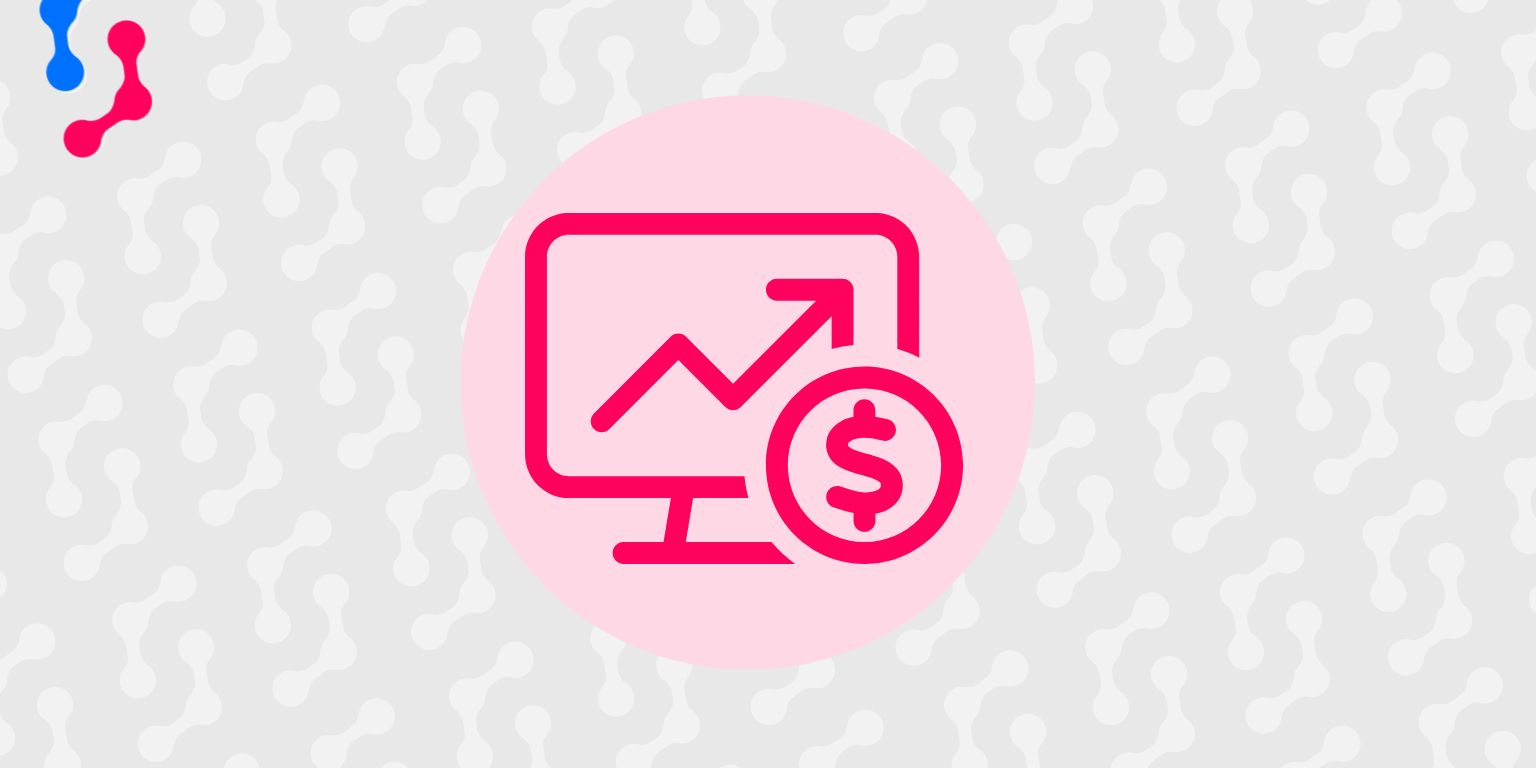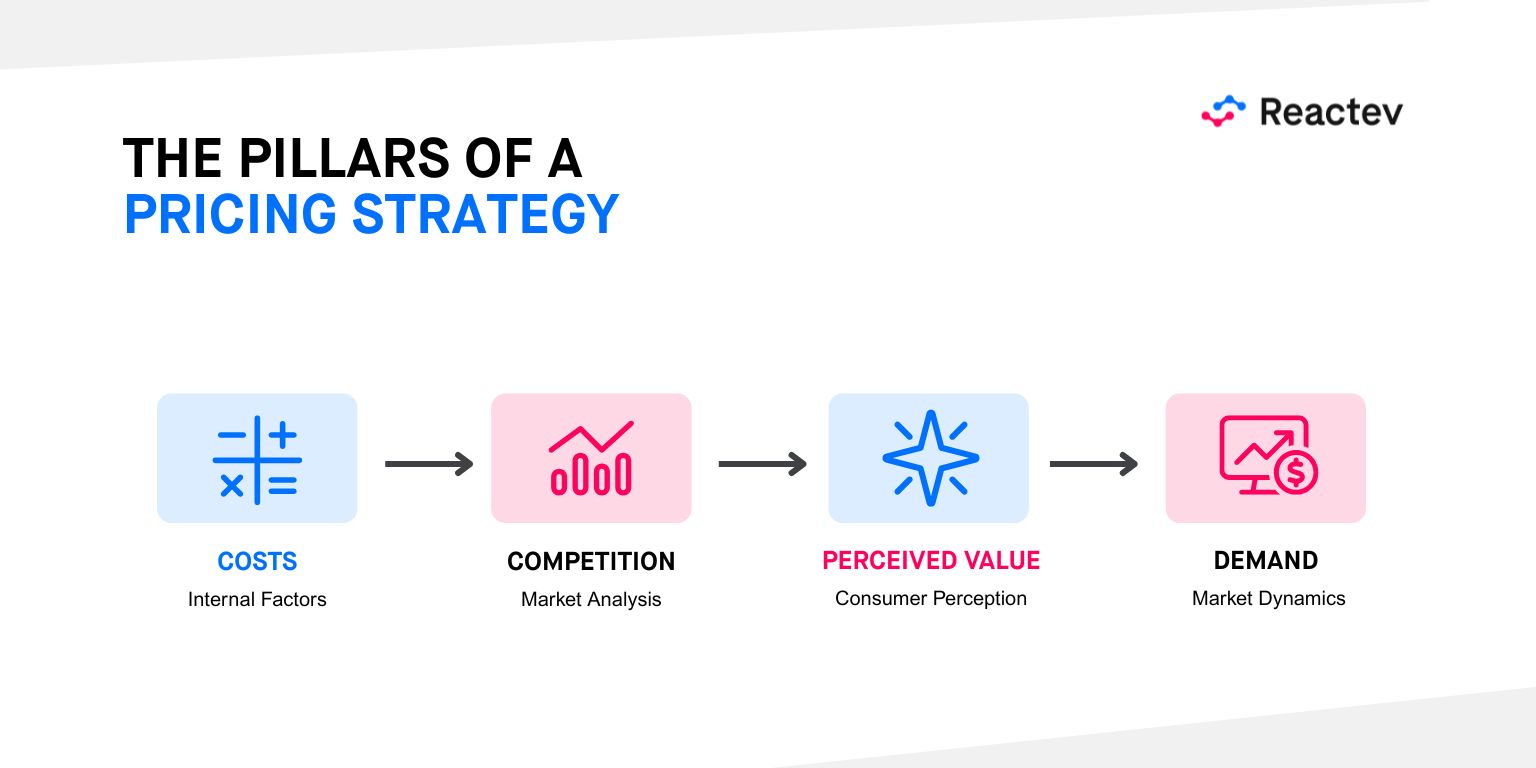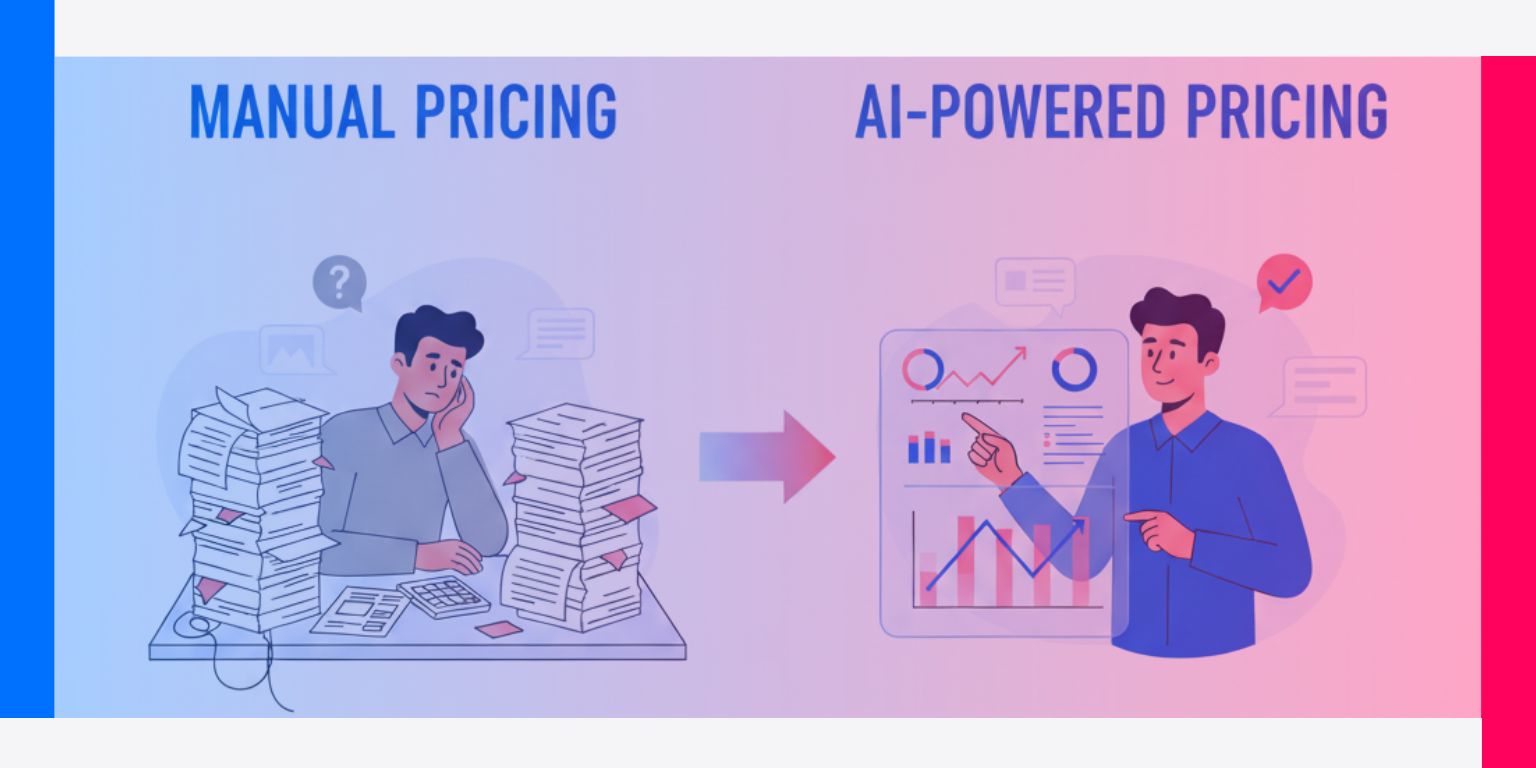
How to Determine Your Pricing Strategy: A Step-by-Step Framework
09/03/2025 - Pricing strategy
Product pricing is arguably the single most impactful decision on a company's bottom line. It's the most powerful profitability lever, yet paradoxically, one of the most poorly managed. Many businesses still operate using an outdated "cost-plus" approach or conduct sporadic, manual competitor reviews. This post isn't just a list of tactics; it's a strategic framework designed to transform pricing from an operational task into a fundamental pillar of growth.
"Setting a price is just the start. The real competitive advantage lies not in finding a static number, but in building an intelligent system that adapts that price at the speed of the market. Technology is the only way to achieve this at scale."
- Antonio Tomás, CEO of Reactev
The Starting Point: Know Your Costs and Profit Margin
Before looking at the market or the customer, you must first look inward. A deep understanding of your cost structure is the foundation upon which any profitable pricing strategy is built. You need to accurately calculate the price floor for each product, the exact point at which profit is zero.
This calculation should include all the costs involved:
- Direct Costs: The cost of acquiring the product from the supplier, manufacturing materials, or raw material costs.
- Variable Costs: Shipping fees, marketplace commissions, payment gateway transaction fees, or marketing acquisition costs.
- Fixed Costs: Warehousing expenses, team salaries, software licenses, office rent, etc.
Only when you have full control over these numbers can you effectively calculate the profit margin for each product, ensuring every sale positively contributes to the company's financial health.
Analyze the Market: What Are Your Competitors Charging?
Once you know your minimum viable price, it's time to look outward. Competitor analysis isn't about copying prices; it's about understanding your relative position in the market. Do you want to be perceived as a premium option, position yourself as market-average (neutral), or compete as the most affordable economy alternative?
This benchmarking allows you to identify opportunities and threats. However, for an e-commerce business with an extensive catalog, manually monitoring dozens of competitors and thousands of products is a Herculean and inefficient task. A great starting point is to use a competitor price monitoring tool to establish an automated and reliable frame of reference.
Do you feel you're reacting too late to your competitors' moves?
Understanding your market position is crucial, but doing it manually is impossible. Discover how a Price Management tool like Reactev can automate this process and give you a real competitive edge.
Define Perceived Value: How Much Is Your Customer Willing to Pay?
The most common mistake is thinking that price is purely a mathematical question. In reality, it's largely a psychological one. Perceived value is the price a customer believes your product is worth, regardless of your costs or competitor prices. This value is influenced by product quality, brand reputation, the shopping experience, and after-sales service.
This perspective is backed by data from Euromonitor International Trending Topics 2026, which notes that consumers no longer evaluate brands on price alone. Instead, they weigh a shifting combination of priorities, including health, convenience, sustainability, and the digital experience.
In fact, this willingness to value elements beyond basic cost translates into concrete behaviors, even in uncertain economic times. According to PwC's 2024 Voice of the Consumer survey, consumers are willing to pay a 9.7% sustainability premium, even as cost of living and inflation concerns loom large.
This underscores that price is formed in the consumer's mind not only by direct economic factors but also by how a brand aligns with their personal values. The strategic goal is to capture the maximum possible value, which makes understanding value-based pricing crucial. This approach allows you to transcend price wars and compete on a much more profitable level.
What is value-based pricing?
Value-based pricing is a strategy that sets a product's price based on the value the customer attributes to it, rather than on production costs or competitor prices. It requires a deep understanding of your customers and the market to quantify the benefits your product offers.

Understand Demand: How Will the Market React to Your Price?
Once you've analyzed your costs, competition, and the value you provide, the next step is to predict how your customers will react to price changes. This is where the concept of price elasticity of demand comes into play, which measures how much the quantity sold changes when its price changes.
- Highly elastic products (like consumer electronics) will see a drastic drop in sales with even a small price increase.
- Inelastic products (like exclusive brand accessories) can handle price increases with little to no impact on demand.
Understanding this factor is vital for planning promotions, liquidating stock, or making strategic price adjustments.
Choose Your Primary Pricing Model
With all the above information, you can make a strategic decision on which pricing model will guide your business. Generally, strategies fall into three main approaches:
- Cost-Based Pricing: Simple and safe, but it ignores the market and the customer.
- Competition-Based Pricing: Keeps you relevant in the market but can lead to price wars and eroded margins.
- Value-Based Pricing: The most complex to execute but the most profitable, as it aligns price with what the customer is truly willing to pay.
The choice isn't mutually exclusive; the most sophisticated strategies combine elements of all three. To delve deeper into each approach, we recommend reading our complete guide to pricing models.
Making the Leap to Continuous Optimization with Technology
Setting the price is only the first step. The real challenge, and where the competitive advantage lies, is in constant optimization. To see how these concepts work in practice, let's analyze a hypothetical scenario.
Case Study: The Electronics Retailer
- The Challenge: An online electronics retailer faces a highly dynamic market. Their pricing methods are slow and fail to adapt to fluctuations in competition, demand, or new launches. As a result, they often sell products below their value potential (losing revenue) or overprice them (losing sales).
- The Reactev Solution: To overcome this hurdle, the retailer implements a solution like Reactev. The system analyzes internal data (sales, stock) and external data (competitor prices, user behavior) to predict the demand elasticity for each device. Using AI models, it generates optimized price suggestions that the team can review and approve to maximize profit.
- The Potential Outcome: With this system, prices are adjusted proactively and optimally. The retailer can react quickly to market movements, leading to a measurable increase in revenue and profit while maintaining its competitive position. They would shift from reacting late to making strategic, informed pricing decisions and improving their profitability.
According to The Business Research Company, the dynamic pricing software market is growing exponentially and is expected to reach $6.29 billion by 2029, with a compound annual growth rate (CAGR) of 15.5%. Companies now understand that technology is no longer an option, it's a necessity to compete.

Frequently Asked Questions About Product Pricing
What is the most common mistake in e-commerce pricing? The most frequent error is focusing exclusively on costs and competition while ignoring the most important factor: the customer's perceived value. This leads to leaving money on the table or entering destructive price wars.
How often should I review my product prices? In today's e-commerce landscape, price reviews shouldn't be periodic (weekly or monthly) but continuous. Real-time monitoring of competitors, demand, and stock levels is key to reacting with agility and maximizing profitability.
Is it better to compete on price or value? Competing on price alone is a risky strategy that is rarely sustainable long-term, as there will always be someone willing to sell for less. Competing on value, by building a strong brand and a superior customer experience, allows you to defend higher prices and healthier margins.
What is dynamic pricing software? It's a technology tool that uses algorithms and artificial intelligence to adjust product prices automatically and in real time. It considers hundreds of variables like demand, competitor prices, stock levels, seasonality, and user behavior to find the optimal price at any given moment.
Conclusion: From Manual Pricing to Strategic Optimization
The process of setting prices has evolved from a simple calculation into a complex strategic discipline. It's no longer enough to cover costs and keep one eye on the competition. To win in modern e-commerce, you must integrate cost analysis, market positioning, perceived value, and demand elasticity into a cohesive, dynamic system. The only way to manage this complexity at the scale and speed the market demands is through technology.
Stop guessing the right price. Request a demo of Reactev and discover how our AI finds the optimal price for every one of your products.
Category: Pricing strategy
